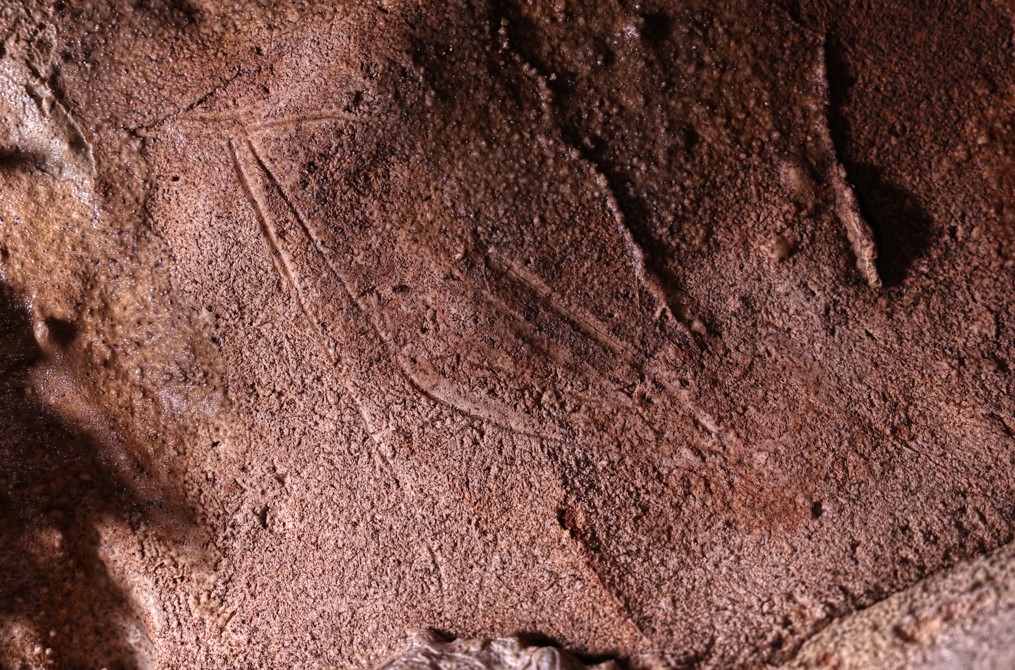The largest collection of prehistoric cave art in Eastern Iberia has been discovered in a cavern in Spain’s Valencia region. Consisting of over 100 images, the extensive array of engravings and paintings features at least 19 different animals and has been dated to over 24,000 years old.
Found in a cave known as Cova Dones, the ancient artworks are unusual in several regards, with their unexpected location coming as a surprise to archaeologists. Prior to this discovery, only three examples of Pleistocene cave art had ever been found in eastern Spain, with the vast majority concentrated in the north of the country and across the Pyrenees into France.
Located in the municipality of Millares, Cova Dones has been known to locals for many years and is often visited by cavers and hikers, yet it took until June 2021 for researchers to notice the incredible artworks adorning the walls of the cave. Describing their discovery in a new study, the team explains that “further work in 2023 allowed us to identify the site as a major Palaeolithic art sanctuary, given the quantity and variety of motifs and the richness and detail of its technical features.”
An engraving of a female red deer.
Image credit: A. Ruiz-Redondo, V. Barciela & X. Martorell
So far, the study authors say they have identified “more than 110 graphic units”, with the main decorated area lying roughly 400 meters (1,312 feet) inside the cave. Among these drawings, the researchers have noted at least 19 different animals, including seven horses, seven female red deer, two aurochs, a stag, and two unidentifiable species.
The rest of the images are made up of “conventional signs” like rectangles and other shapes, as well as tube-like markings known as “macaroni”. According to the researchers, the ancient artists employed an unexpected range of methods and skills, in some cases scraping off the limestone precipitate on the surface of the walls to create shaded figures. “This technique is rare in Palaeolithic cave art and previously unknown in eastern Iberia,” write the authors.
Equally surprising is the fact that the majority of the paintings in Cova Dones were created by applying red clay to the walls. Typically, prehistoric cave paintings were made using diluted ochre or manganese powder, so the use of clay was a highly unexpected finding.
Painted female deer heads.
Image credit: A. Ruiz-Redondo, V. Barciela & X. Martorell
In their write-up, the study authors explain that it is not possible to conclusively determine the age of the artworks. However, certain features on the cave walls do provide some clues as to when the drawings might have been created.
Most notably, the presence of cave bear claw marks help to indicate the age of some of the engravings. The fact that these scratches overlay a few of the etched figures suggests that the responsible animal entered the cave after the artists had completed their work.
“Considering the date for the extinction of the cave bear, we estimate that at least part of the rock art must be more than 24,000 years old,” write the researchers.
The study is published in the journal Antiquity.
Source Link: Unprecedented 24,000-Year-Old Paleolithic Art Sanctuary Found In Spain
